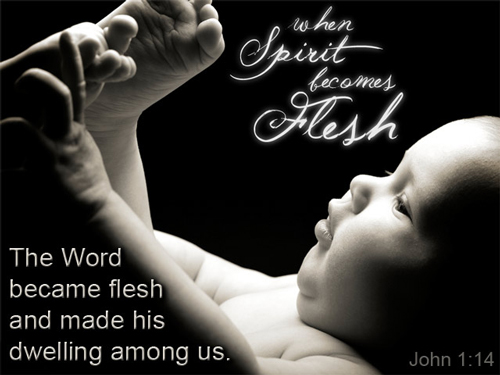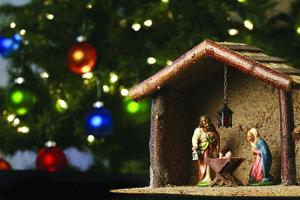I.Theme – Call and response to service

“Jesus and John” – Hagia Sophia, Istanbul 532
The lectionary readings are here or individually:
1. Isaiah 49:1-7 – Isaiah
2. Psalm- Psalm 40:1-12
3. Epistle – 1 Corinthians 1:1-9
4. Gospel – John 1:29-42
Isaiah is there to call Israel back to God. He identifies himself as chosen before he was born (like Jeremiah, Paul and John the Baptist) and even named (like Jesus). At the first level, in vv. 8-13 God invites the exiles to return from Babylon But note also “a time of favor” (v. 8) and “a day of salvation”: these terms speak of the end times. God saves both now and in the era to come.
In the Psalm, God has snatched a human being out of the realm of death and has given life back to him. This is the origin of this thanksgiving. But this thanksgiving is not ‘a return,’ a human answer or ‘offering’…— Yahweh has put the song of thanksgiving into the mouth of the singer which begets new obedience.” The self-recognition or self-discovery in the Psalm is an experience every Christian faces.
Paul is called to be an “apostle”, one sent out by Christ to perform a special mission to the Corinthians. God has strengthened them through their telling of the good news. He has called them into “fellowship”, union with other believers which is union with Christ. It will be Christ who will really put them on a firm footing when he comes and God is the one we need to rely on ultimately. God is the one who really constitutes the community as a community of Christ, a Christian community. It began with God through Paul and it ends with God.
Jesus was baptized last week and now he is ready to get started in his ministry. He needs some helpers.
In the Gospel, those who are called gradually accept the identity of the one who calls them. With that goes whatever service the Lord calls us to.
There are three themes in the passage: John’s witness to Jesus, Jesus’ epiphany and identification, the call to discipleship. In this passage, Andrew and Peter are called to be disciples.
II. Summary
Old Testament – Isaiah 49:1-7
This is the second Servant Song. The servant speaks to Israelites scattered around the Mediterranean (“coastlands”); he identifies himself as chosen before he was born (like Jeremiah, Paul and John the Baptist) and even named (like Jesus). Further, God made him an effective instrument in proclaiming his message (“sharp sword”, v. 2). Perhaps God hid him for protection or in preparation for his mission. V. 3 may tell us who the servant is: “Israel”, the community of the faithful, led by the prophet. They will show God’s power to others (“glorified”). But the servant retorts (v. 4): despite all our/my efforts, no one listens! Surely I minister on God’s behalf and God will “reward” me for it (even if people don’t). The servant’s “strength” (v. 5) is from God; he is to turn “Jacob” (Israel) back to God. God (not the prophet) will gather “Israel” to him. But his mission is to all peoples, not only wayward Israelites and the faithful (“survivors”, v. 6).
God continues to speak to the servant, “one deeply despised” (v. 7), hated by many and “the slave of rulers”: God’s fidelity is his surety that all, even rulers, will hold him in awe.
At the first level, in vv. 8-13 God invites the exiles to return from Babylon; this is the servant’s mission (“you”, v. 8). They will travel in safety (“not hunger or thirst …”, vv. 10-12) from throughout the known world. God gave them a “covenant” (v. 8) at Sinai; perhaps the servant is the new covenant – God will make a new covenant with his people. But note also “a time of favour” (v. 8) and “a day of salvation”: these terms speak of the end times. God saves both now and in the era to come.
Psalm -Psalm 40:1-12
This psalm may have been two psalms (vv. 1-11 and 12-17) later joined through use in a liturgy. Vv. 1-3 tell of the psalmist’s experience (but not what troubled him). The “desolate pit” (v. 2) may be Sheol, the subterranean abode of the dead; perhaps he was near death, and recovered. This hymn is his “new song” (v. 3) of thanksgiving. The “proud” (v. 4) trust in themselves (not God) or in materialism. The psalmist marvels at God’s innumerable “deeds” (v. 5) and “thoughts” for his people. God prefers people listening to him and doing his will over sacrificing to him (v. 6). (It was thought that God kept a “book”, v. 7, a record of how ethically each person lived.) In thanks, the psalmist has told “the glad news” (v. 9) in the Temple, “the great congregation”. He has not held back (“restrained”) in telling of God’s “faithfulness” (v. 10) to him and all God has done for him, so may God not withhold his “mercy” (v. 11), “love” and fidelity to him.
Epistle -1 Corinthians 1:1-9
Paul uses the standard introductory form of ancient letters when he identifies the sender and the recipients, followed by a greeting and thanksgiving.
Paul is an “apostle”, one sent out by Christ to perform a special mission. The church at Corinth is made up of ordinary people “called to be saints” (v. 2), set apart for God’s work in the world, “sanctified” in baptism. Perhaps Paul reminds them that there are Christians elsewhere too. V. 3 is his greeting: he wishes them “grace” (God’s freely given gift of love) and “peace” (the total state of well-being to which we are admitted through Christ): both come from the Father (as source) and the Son (as means or agent). In later chapters, Paul cautions his readers against misuse of spiritual gifts (v. 7), so in v. 5 he may be damning them with faint praise. He praises their eloquence (“speech”) and understanding (“knowledge”) but not (as in other letters) their faith, hope and love for each other and for Christ. He gives thanks for these spiritual gifts, that were causing so much division and dissension in the Corinthian community. He will later deal with the misunderstanding and misuse of these gifts (in chapters 12 and 14), but they are undoubtedly God-given, the confirmation of “the testimony of Christ” that is, the preaching of the gospel.
In v. 6, “testimony” is bearing witness: God has strengthened them through their telling of the good news. They are indeed richly blessed (v. 7), but (as mentioned later), they tend to dwell on the excitement of the present rather than looking forward to “the revealing of … Christ”, his second coming. God will help them prepare for that day, so that they may be among those judged worthy of eternal life (“blameless”, v. 8). “God is faithful” (v. 9): he will not abandon what he has begun. He has called them into “fellowship”, union with other believers which is union with Christ.
Gospel – John 1:29-42
Today’s reading represents the fourth gospel’s version of the baptism of Jesus and the calling of the first disciples, with an emphasis on the meaning of the events.
John the Baptist has denied that he is any of the figures expected by Jews to inaugurate a new era: he is neither the Messiah, Elijah, nor the prophet like Moses; rather he prepares people for the coming of the Lord. He has also told some religious authorities that one is already among them who is far more worthy than he.
“The next day” John acclaims Jesus as “Lamb of God”. He is probably thinking of the fourth Servant Song: there the servant is “like a lamb that is led to the slaughter”.For the author, this term points to the suffering servant of Isaiah and to the Passover lamb as a symbol for the death of Christ. In submitting to baptism, Jesus marks his vocation to an atoning death.
John recognizes that Jesus outranks him (“ranks ahead”, v. 30) and “was” (existed) before him. This harkens back to the prologue in v1. In vv. 31-33 he recalls his experience of Jesus’ baptism, and justifies what he has proclaimed. He says: I didn’t recognize him as Messiah (“know him”), but I now realize that I baptised with water in order that Jesus might be shown to Jews. The coming of the Spirit showed me that Jesus is the one chosen by God. I am convinced that he is, and I have told others (v. 34). (Later on, on the lips of Martha, “Son of God” and “Messiah” are synonymous.)
Unlike the prophets, to whom the Spirit was a temporary gift, Jesus receives and retains the Spirit and then gives it to others, so that they too may enter that abiding relationship.
In vv. 35-42, two of John’s disciples begin to follow Jesus. John in his Gospel tells us that both he and Andrew accompanied John the Baptist, and that Andrew found his brother Peter and introduced him to Jesus.
In this story of the calling of the first disciples, Jesus takes the initiative by turning and asking the two disciples what they are searching for. They reply by asking for the abiding place, the permanence, they cannot find elsewhere. He responds with the surprising invitation that we also long to hear, “Come and see” (v. 39) to investigate what he teaches.
Staying” and “remained” are technical terms in this gospel: the two begin to understand the way of life Jesus offers and expects. V. 40 tells us that one of the two is “Andrew”; the other is unnamed. Andrew tells “Simon” (v. 41) the good news and introduces him to Jesus. (The Greek word translated “Anointed” is Christos.) Jesus prophesies that Simon will be nicknamed “Cephas” (v. 42), the Aramaic word for rock. Petros, the Greek word for “Peter”, also means rock.
In John’s account, Jesus simply tells his Apostles, come, and you will see (John 1:39; and later outside the scope of the lectionary John 1:46). But this challenge is not merely idle conversation. Jesus warns his disciples (twice) that they will see the mighty works of God made manifest through Him. They will witness the seven great miracles in John’s Gospel, and the Transfiguration as well. And of course, they will come to know of the Resurrection, and encounter the risen Christ in the Upper Room. The author of the Fourth Gospel attributes to Jesus, six times, the phrase ὄψεσθε: you will see.
The calling of the disciples is covered in the other Gospels but John’s account is different. In the synoptic accounts, Peter is called by the Sea of Galilee (I will make you fishers of men – Mt 4:18; c.f. Lk 5:10). In John’s Gospel, there is no association of the calling of Peter and the Sea of Galilee.
The Gospel of John suggests to us that John the Baptist introduced the first disciples to his cousin, Jesus. It would not be surprising that John the Evangelist would remember events not known to Matthew or Luke.
The accounts in John’s and Luke’s Gospels have one thing in common, though. The calling of Peter is associated with an act of faith and with the witness to the mighty works of God. In Luke’s Gospel, Peter is told to put out into the deep. When Peter objects, Jesus tells him where to drop his net and Peter catches a large haul. In other words, it is Jesus who wills the success of the fisherman’s (Peter’s) work.
III. Articles for this week in WorkingPreacher:
Old Testament – Isaiah 49:1-7
Psalm – Psalm 40:1-12
Epistle” – 1 Corinthians 1:1-9
John – John 1:29-42













